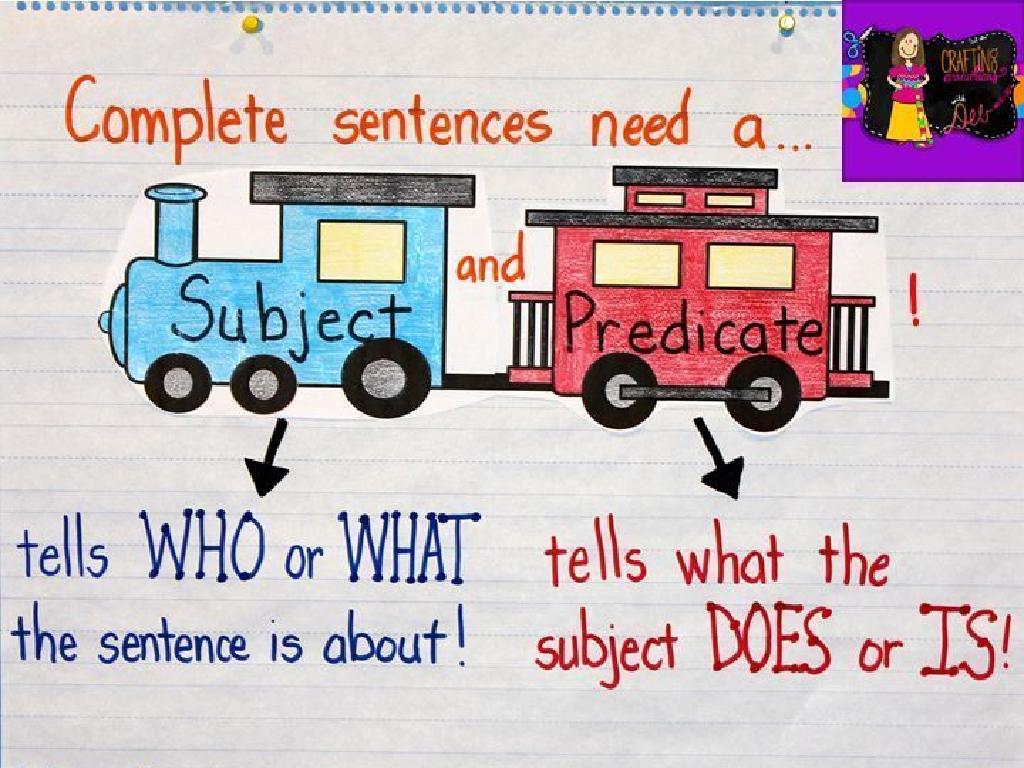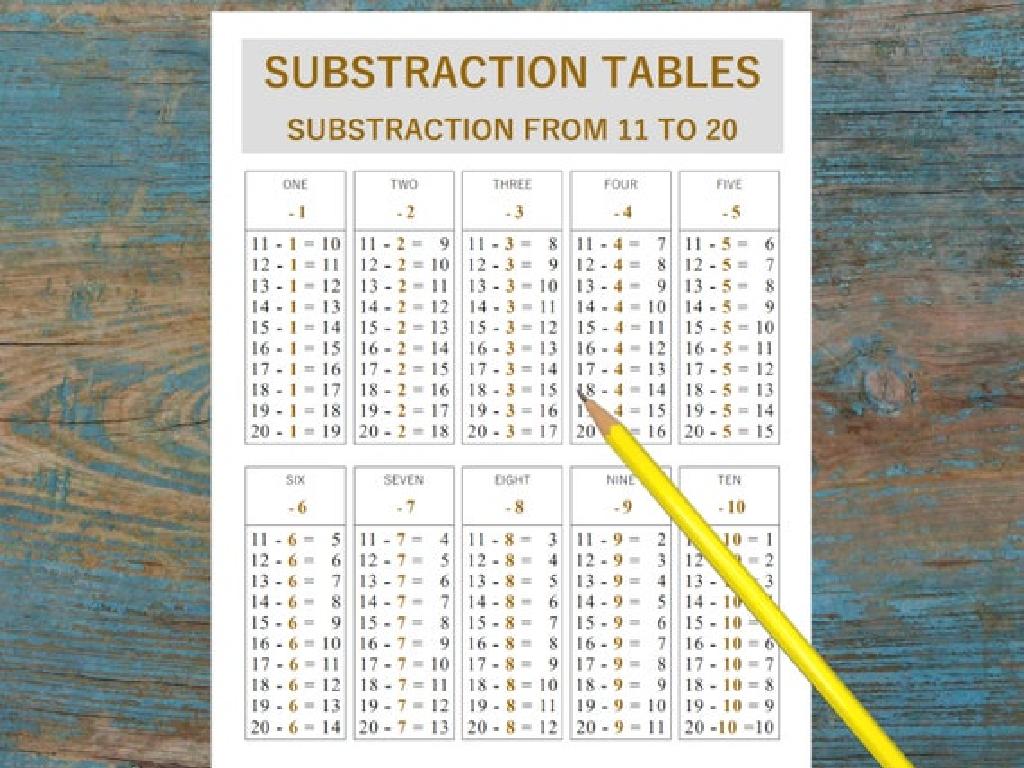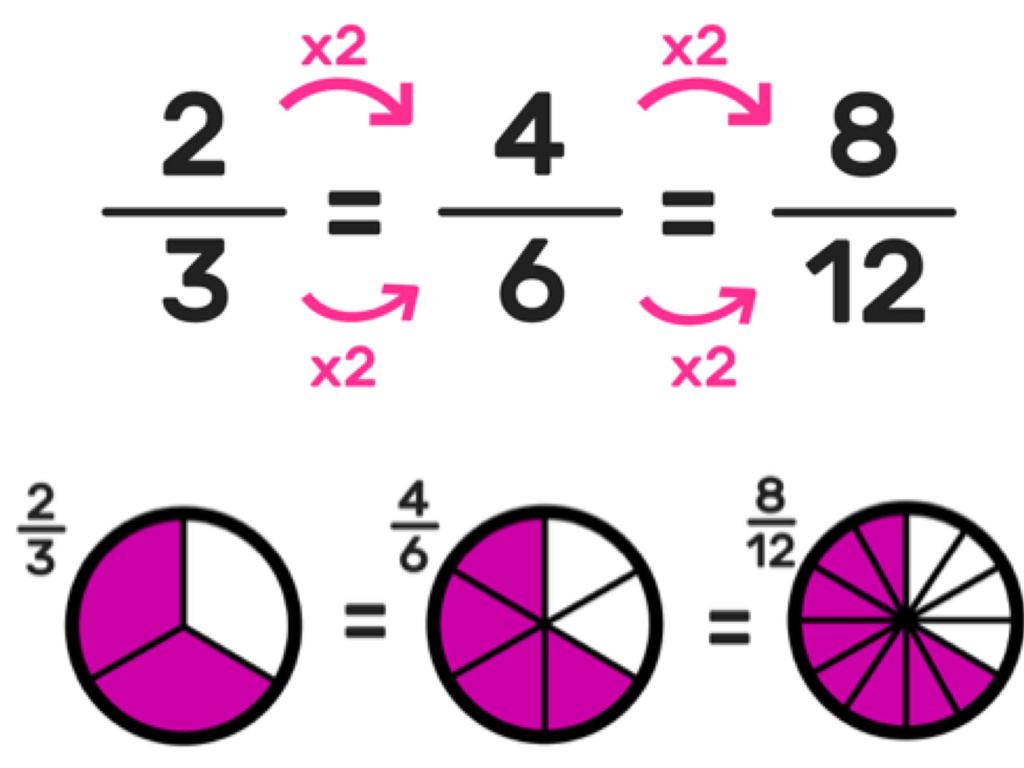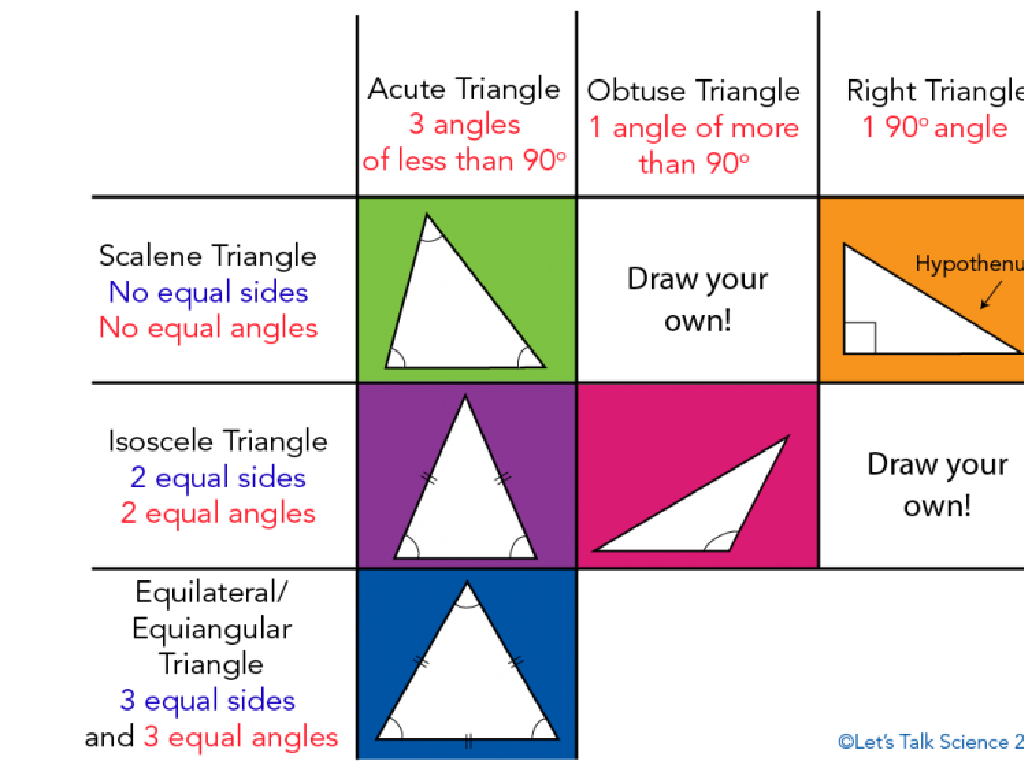Cylinders
Subject: Math
Grade: Pre-k
Topic: Solid Shapes
Please LOG IN to download the presentation. Access is available to registered users only.
View More Content
Welcome to Solid Shapes: Meet the Cylinder
– Greet our little explorers
– Today’s shape: the Cylinder
– A cylinder is like a can or a drum
– Repeat after me: ‘Cylinder’
– Cylinders are everywhere!
– Look around, can you find cylinders here?
|
This slide is designed to introduce Pre-K students to the concept of cylinders as part of learning about solid shapes. Start with a warm greeting to make the children feel excited about the day’s lesson. Introduce the cylinder by comparing it to familiar objects like cans or drums to help them identify the shape in their environment. Encourage the children to pronounce the word ‘Cylinder’ together to reinforce their understanding and make the learning interactive. Ask the students to look around their classroom or home to spot any cylindrical objects, which will help them connect the concept to real-world examples. The goal is to create an engaging and interactive environment where the children can explore and learn about shapes in a fun and memorable way.
Exploring Cylinders
– A cylinder has two flat ends
– It has one curved side
– Cylinders look like soup cans
– Think of a can of soup or a rolling pin
– Find a cylinder in our classroom!
– Let’s search for cylinder shapes around us
|
This slide introduces the concept of cylinders to Pre-K students. Start by explaining that a cylinder is a solid shape that has two flat ends that are the same size and shape, and one curved side. Use familiar objects like a can of soup or a rolling pin to help them visualize a cylinder. Then, engage the students in a fun classroom activity where they search for and identify objects that have a cylindrical shape. This hands-on activity will help reinforce their understanding of cylinders and solid shapes in a tangible and memorable way. Make sure to walk around the classroom to assist and encourage students as they explore and discover.
Cylinders Around Us
– Cylinders are all around us
– Examples: beans can, cup, candle
– Everyday items shaped like a tube
– Think of more cylinder objects
– Use your imagination to find cylinders
– Share your examples in class
|
This slide is aimed at helping Pre-K students recognize and identify cylinders in their everyday environment. Start by explaining that a cylinder is a solid shape that is round and has two flat ends that are the same size. Show them the examples provided, like a can of beans, a cup, and a candle, and explain how these items have the shape of a cylinder. Encourage the students to look around their homes and outdoors to find more examples of cylinders. This activity will help them understand the concept of cylinders and how they are a part of many objects they see daily. During the next class, create a discussion where the children can share the examples they found and discuss the shapes together.
Let’s Feel a Cylinder
– Cylinders: smooth and curved
– Two flat ends on a cylinder
– Passing around cylinder objects
– Safe objects like a can or a toy drum
– Discuss the cylinder’s texture
– Is it hard or soft? Smooth or rough?
|
This slide is designed for a tactile learning experience where Pre-K students can explore the shape and texture of cylinders. Start by explaining that cylinders have a smooth, curved surface and two flat ends. Provide a variety of safe cylinder-shaped objects for the children to touch and hold, such as a soup can, a toy drum, or a roll of toilet paper. Encourage them to describe how each object feels, discussing whether it’s hard or soft, and smooth or rough. This activity will help them to understand the concept of cylinders in a hands-on way, making the learning process engaging and memorable. Ensure that all objects are clean and safe for handling by young children.
Rolling Cylinders
– Cylinders have a curved side
– Gently roll cylinders on the floor
– Use toy cylinders or cans
– Observe how cylinders move
– See the path they take
– Discuss the rolling movement
– Why do they roll straight or turn?
|
This slide introduces the concept of rolling to Pre-K students using cylinders. Explain that the curved side of a cylinder allows it to roll. Demonstrate by gently rolling cylindrical objects on the floor and encourage the children to observe the movement. Ask them to notice the path the cylinders take and whether they roll straight or turn. This activity helps develop their understanding of shapes and movement. For the class activity, provide various cylindrical objects like toy drums, cans, or rolls of tape and let the children experiment with rolling them on different surfaces. Discuss why some cylinders might roll straight while others might turn, introducing basic concepts of weight distribution and surface texture.
Stacking Cylinders: Can We Stack Them?
– Can cylinders stack like blocks?
– Try stacking cylinder objects
– Use toy cylinders or cans
– Observe if they stay or roll
– Some might stay, others might roll
– Discuss why this happens
– Talk about shapes and balance
|
This slide introduces the concept of stacking cylinders, a hands-on activity for Pre-K students to explore the properties of solid shapes. Encourage the children to try stacking various cylindrical objects, such as toy cylinders or cans, to see if they can balance like blocks or if they tend to roll away. Observe their attempts and discuss the outcomes. Use this activity to talk about the differences between shapes that stack easily and those that do not, focusing on balance and the flatness of sides. This will help them understand why certain shapes like cubes stack well, while others like cylinders can be more challenging. Provide a variety of cylinder sizes for the activity and ensure safety by avoiding heavy or sharp objects.
Cylinder Craft Time!
– Let’s make paper cylinders
– Roll paper and tape the ends
We’ll make a tube shape by rolling paper
– Decorate your cylinder
Use colors or stickers to make it unique
– Show and tell your creation
|
This slide introduces a hands-on activity for Pre-K students to create their own cylinders, helping them understand the shape in a tangible way. Provide each student with a sheet of paper and guide them through the process of rolling it into a cylinder and securing it with tape. Encourage creativity by allowing them to decorate their cylinders with colors, stickers, or other craft materials. Once completed, have a show and tell session where each child can present their cylinder and talk about what they did. This activity not only reinforces the concept of cylinders but also promotes fine motor skills and creativity.
Cylinder Hunt Activity
– Let’s go on a Cylinder Hunt!
– Search for cylinders around you
– Look for round, tall shapes like cans or cups
– How many can you find?
– Keep count of each cylinder you see
– Ready, set, go!
|
This activity is designed to help Pre-K students recognize and identify cylinders in their environment. Encourage the children to look for objects that are shaped like a cylinder, which is a solid shape with two flat circular ends and one curved side. Provide examples such as cans, cups, and tubes. This will help them understand the concept of three-dimensional shapes in a fun and interactive way. Have the children move around the room and count how many cylindrical objects they can find. After the hunt, gather the students and discuss their findings, reinforcing the shape and its characteristics. Possible variations of the activity could include grouping found objects by size, comparing which objects can roll, and discussing why some cylinders like a can of beans cannot roll.
Review Time: All About Cylinders
– Cylinders have two flat ends
– One curved side makes a cylinder
– Cylinders can roll
– Like a rolling pin or a can of soup
– Stacking cylinders is fun but tricky
– Try stacking cans or blocks to see!
|
This slide is a recap of our lesson on cylinders, aimed at reinforcing the key characteristics of this solid shape for Pre-K students. Emphasize that cylinders have two flat ends that are circles and one curved side that connects them. Use everyday objects like cans or rolling pins to demonstrate how cylinders can roll. For stacking, provide examples with objects that are cylinder-shaped to show that while they can be stacked, it may not be as easy as stacking blocks. Encourage hands-on activities where children can interact with cylindrical objects to better understand these concepts. The goal is to solidify their understanding through repetition and real-life examples.
Goodbye, Cylinders!
– Celebrate learning about cylinders
– Recognize cylinders around us
– Cylinders are everywhere! Like cans and tubes
– Say farewell to cylinder crafts
– Wave your cylinder craft goodbye
– Clean-up time
|
This slide marks the end of the lesson on cylinders. Congratulate the children on their hard work and understanding of cylinders. Highlight the importance of recognizing cylinders in everyday objects to reinforce their learning. Encourage them to say goodbye to their cylinder crafts, which helps with the transition to clean-up time. Provide clear instructions for clean-up to maintain order. Reflect on the day’s activities and consider sharing photos of the crafts with parents to show what the children have learned.






